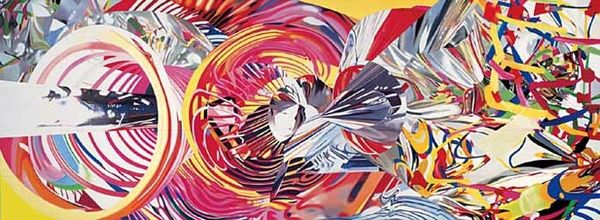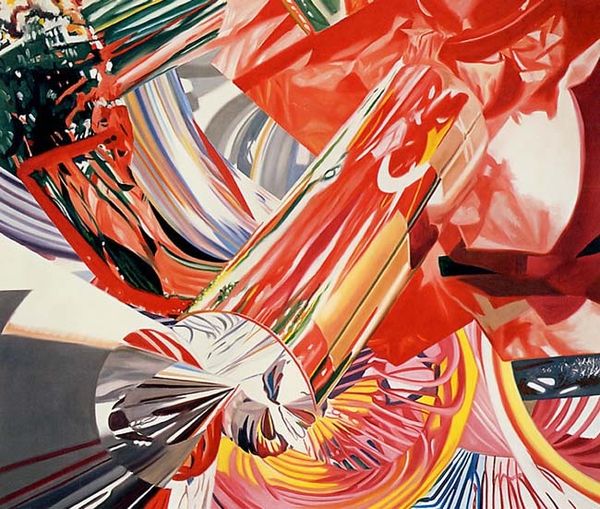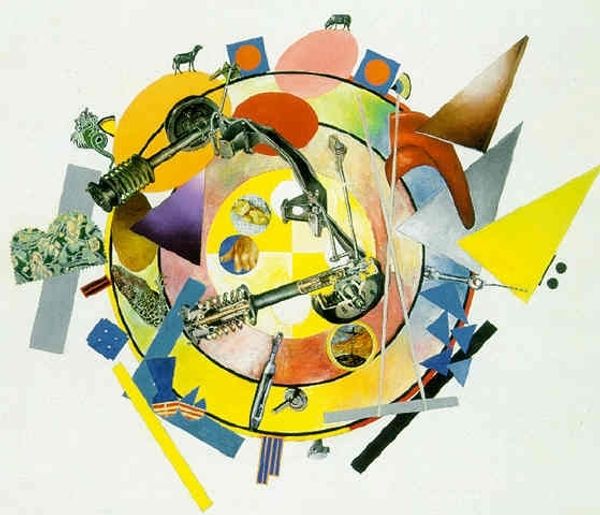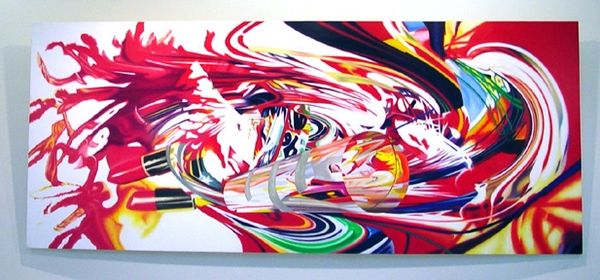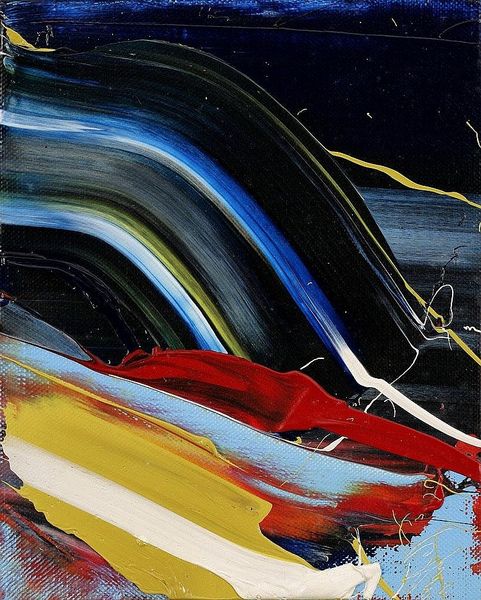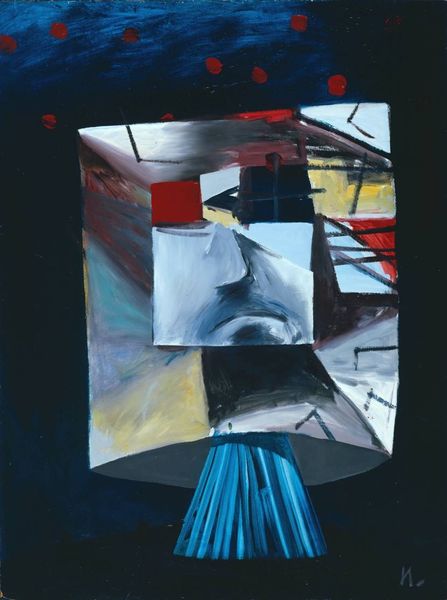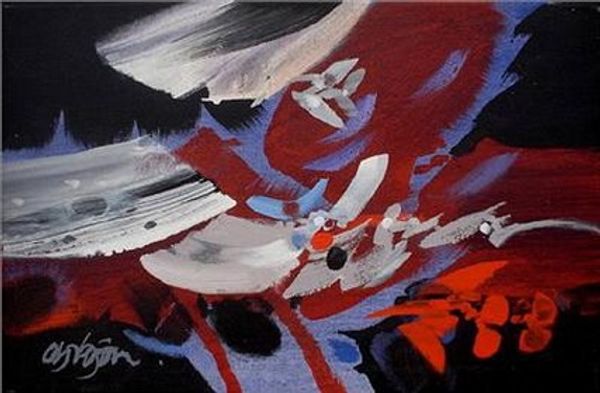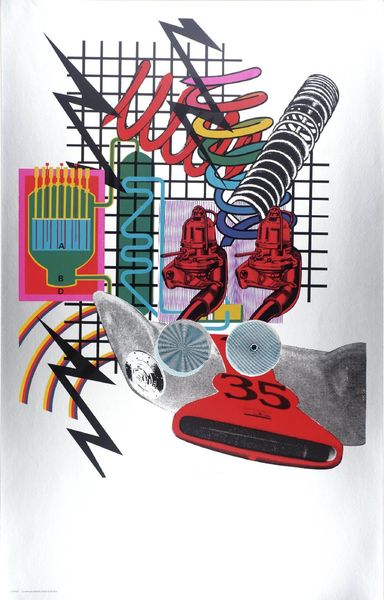
Copyright: James Rosenquist,Fair Use
Curator: Let’s discuss James Rosenquist’s “The Swimmer in the Econo-mist (painting 3)” from 1998, a painting utilizing acrylic paint, falling under the pop-art movement. It’s a visually complex work. What are your immediate thoughts? Editor: It feels chaotic and jarring. The slick, hard surfaces and bold colors clash aggressively. The scale seems… exaggerated, almost grotesque. I sense a definite critique of industrialization and consumerism here, wouldn't you agree? The painting process feels intentional, like an industrial, detached method of making, maybe to match his commentary. Curator: Yes, a very shrewd reading! Structurally, we see Rosenquist’s continued engagement with juxtaposing seemingly unrelated imagery to create dissonance and fragmentation. Note the juxtaposition of those hyperrealistic drill bits with lipsticks, the city grid, all offset by that central, almost chrome-like object. It’s a deliberate disruption of visual harmony. Editor: Precisely! It’s not just visual, though, but materially disruptive too, right? Rosenquist uses the commercial materials of acrylic to create what appears to be, visually, something smooth and perfect—but look closer. The edges are crisp, sharp, probably from meticulous masking. Mass production aesthetic rendered manually through his unique skill. Curator: Absolutely. One can trace an art historical lineage in its compositional arrangement that links it directly to cubist strategies of fracturing and reassembling the picture plane, yet he’s introducing themes resonant with pop art. Semiotically, these commonplace objects become signs freighted with social commentary. Editor: To be sure, but it’s how he renders the subjects, and even perhaps, why he is interested in depicting consumerist themes in the first place. The highly polished and industrial material drills or metallic casing against lipsticks are definitely making a social statement—or multiple statements that pull from an American manufacturing moment, its focus on female consumer culture, and their co-production, as the city seems to fall into chaos in the distance. Curator: I concur. His choices highlight that the objects are themselves almost character-like, devoid of clear emotion. But Rosenquist, with all of this in mind, seems to give them the center stage for all to ponder. Editor: Yes, to the viewers in the future as much as those then. An impressive collision of making and subject indeed!
Comments
No comments
Be the first to comment and join the conversation on the ultimate creative platform.
